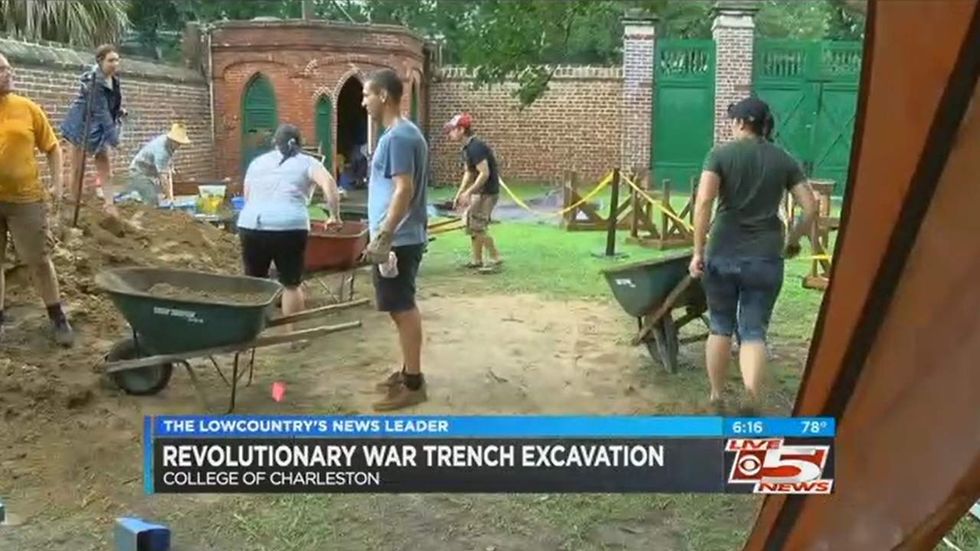
Researchers in Charleston, South Carolina, discovered this week Revolutionary War-era archaeological evidence that could dramatically change how the city is developed for decades to come. (Image source: WCSC-TV screenshot)

Researchers in Charleston, South Carolina, discovered this week Revolutionary War-era archaeological evidence that could dramatically change how the city is developed for decades to come.
After two weeks of digging near an early 19th century home in Charleston, College of Charleston students and archaeologists discovered a small lead fragment believed to have been a rifle ball fired during the British army’s siege of Charleston during the Revolutionary War, according to a report by the Post and Courier (S.C.).
The lead, coupled with a revelation from the previous week that soil dating back to the 1780s appears to have been significantly disturbed in the area, appears to confirm the archaeologists’ theory that the site was once part of an extensive network of trenches built by the British in what was then a mostly unoccupied part of the city to maneuver against American forces.
The Siege of Charleston was one of the Americans’ worst defeats of the Revolutionary War. Lasting only about a month, the British army, led by Lieutenant General Sir Henry Clinton, successfully managed to siege the important colonial city, forcing American Major General Benjamin Lincoln to surrender in May 1780, along with 3,000 Patriot soldiers and important stockpiles of munitions and military equipment.
The Post and Courier reported that after the British captured the city, they filled in all the trenches built during the siege to ensure they couldn’t be used against them in the future.
After the war ended and the city expanded, residents of Charleston built many homes and businesses on the land, sealing in what some believe could be a treasure trove of archaeological finds.
The trenches, which had never been uncovered before, were identified in part using old Revolutionary War-era maps, and archaeologists now say there are many more sites to discover, but only if measures are taken to ensure future developments don’t destroy American history.
To protect other sites, the Historic Charleston Foundation is calling for a “city-wide archaeological ordinance” in a petition posted on Change.org.
“Great cities are like tapestries — their history, character and individuality are the fabric from which they are woven,” the petition states. “Charleston's buildings and urban port setting provide a wonderful sense of place … Preservation, we believe, ensures that Charleston maintains a balance between its role as one of America's most important architectural resources and a real, living city with a great quality of life for its residents. What is above ground only tells a fraction of our shared history; there is so much more to discover under the ground — but only if we are able to investigate it in a meaningful way.”
The petition has been signed by more than 2,500 people and has the endorsement of many historians and archaeologists in the area.
If the ordinance is passed, it could slow development in much of the historical city, because archaeological work would have to be allowed in many areas before construction could begin. The HCF has said the trade-off is worth it, because the ordinance would prevent "hundreds of years' worth of history" from being "carted off without archaeological monitoring or study."